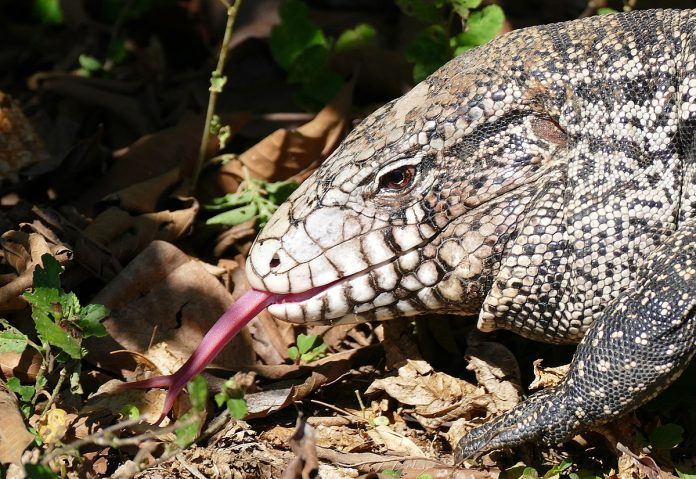Argentine tag lizards are becoming more and more popular as pets, but their unjustified release has become a serious environmental problem in the United States. In recent years, there has been an increase in cases where lizard owners who have grown to a large size decide to release them outside. This poses a threat to local fauna and flora, as these lizards can reach the size of the dog.
The Department of Natural Resources of South Carolina (SCDNR) has recently released a warning about invasive Argentine black and white lizards of tag, which have been harming the state ecosystem for several years. This species was first discovered in 2020, and since then 32 confirmed cases of observation in 17 districts, of which 29 belong to black and white tags, and 3-to ore.
According to State Herpetologist Andrew Gross, SCDNR received 114 reports of lizard observation, but it is possible to confirm this data only in the presence of photos or if the lizard has been caught. Invasive lizards actively affect the local ecosystem, eating eggs of quails, turkeys, alligators and birds that nest on the ground. They also do not neglect fruits, vegetables, plants, paddle, small live animals, pet food and chicken eggs.
In order to control this invasive species, the import and breeding of lizards tag was prohibited in the state in 2021. However, there is a loophole for those who already have them as pets: they can keep their lizards if they register with SCDNR.
Despite the ban, experts believe that lizards are still released because their owners cannot cope with their size. Invasive lizards, which can grow up to 1.5 meters long, were recorded not only in South Carolina, but also in Cleveland, Charleston Mountains, as well as in Texas, Alabami and Louisiana. Just a few months ago they were observed in Florida.
Tag, though safe for people and non -poisonous, harm local ecosystems. Their bites can be painful, and given that the tag can tolerate cold, capable of raising their body temperature by 50 degrees and falling into hibernation, their presence is a call for biodiversity in the region. Therefore, it is important for the public to be aware of the danger that these lizards carry and take measures to prevent their further distribution.


